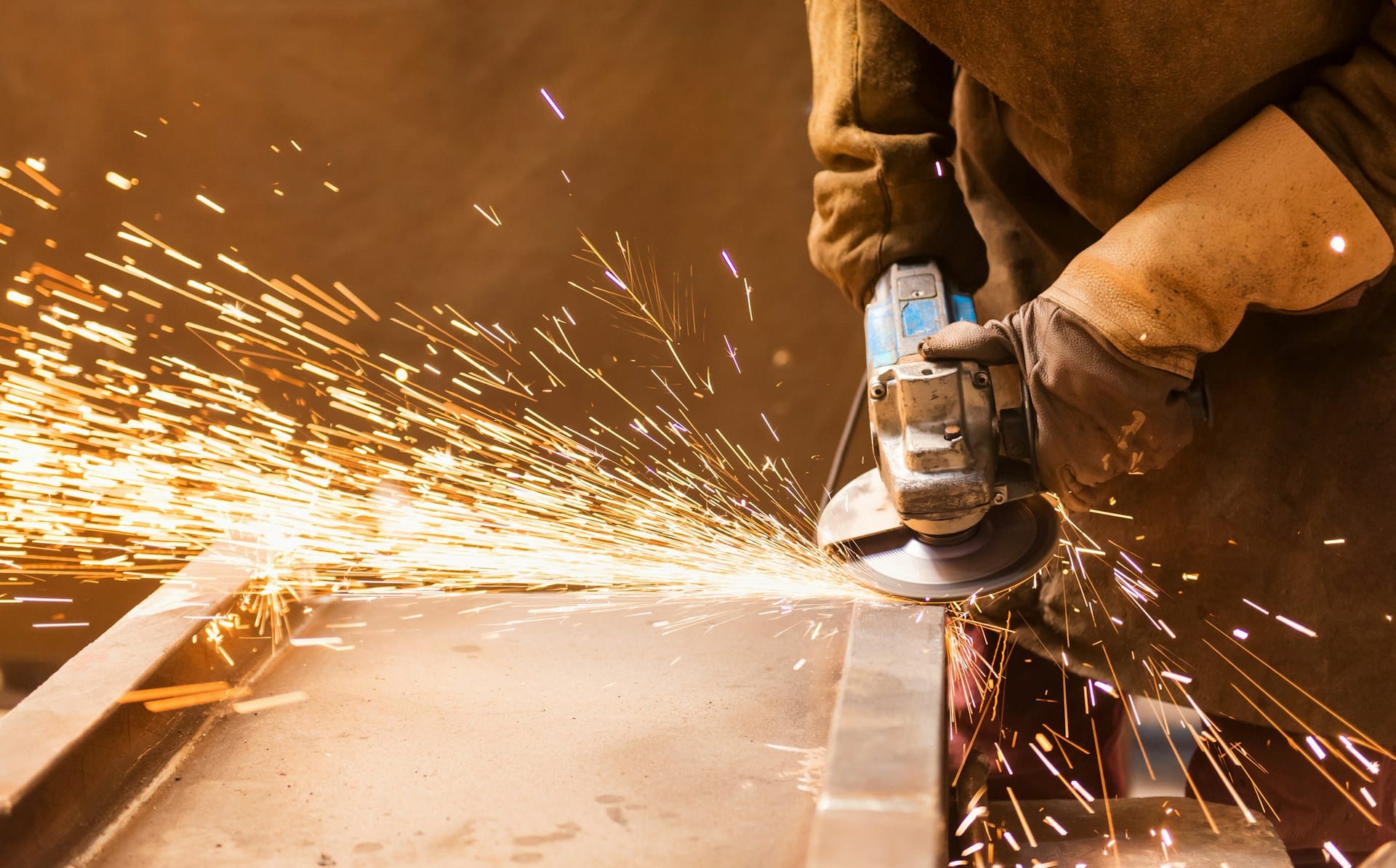Creating everyday items from metal involves several complex processes that turn raw materials into useful products. These methods can seem confusing, but they are essential for crafting everything from cars to kitchen appliances.
In this article, you’ll learn about different ways metals are cut, formed, and joined. We’ll break down these techniques into simple terms so you can understand how each method works. Understanding these common fabrication methods helps us appreciate the hard work and skill involved in making the metal objects we use daily.
The Basics of Metal Cutting: Techniques and Tools
Metal cutting is a fundamental step in the fabrication process. It involves slicing metal materials into specific shapes and sizes with precision. Different techniques are used for cutting metal, each with its own set of tools and advantages. For instance, plasma cutting uses a jet of ionized gas to cut through metal. It’s known for its speed and accuracy, making it suitable for both thick and thin materials.
Another common technique is laser cutting. This method employs a high-powered laser beam to make precise cuts. It’s perfect for detailed designs and can handle a variety of metals. Water jet cutting uses a high-pressure stream of water mixed with abrasive materials like garnet. This technique is ideal for metals that can’t handle high heat, as it cuts without generating significant heat. Each metal cutting method has its specific use cases, ensuring that the right tool is used for the job.
Common Metal Forming Methods: Bending, Rolling, and Stamping
Once the metal is cut, the next step often involves shaping it into the desired form. Bending is a popular metal forming method that involves shaping metal sheets into different angles and curves. This is typically done using a press brake, a machine that applies force to bend the metal. Bending is crucial for creating items like frames and brackets.
Rolling is another method where metal sheets are passed through a set of rollers to produce cylindrical shapes or curves. This technique is often used for creating tubes, pipes, and other round objects. Stamping involves pressing a die into the metal to imprint specific shapes or designs. This method is commonly used in mass production to create numerous identical parts quickly and efficiently. By understanding these forming techniques, we can appreciate how versatile and adaptable metal fabrication can be.
A Quick Guide to Metal Joining Techniques: Welding, Riveting, and More
Joining metal parts is a crucial step in fabrication, and there are several methods to achieve strong and durable connections. Welding is one of the most common techniques where heat is used to melt and fuse metals together. Different types of welding, such as MIG, TIG, and stick welding, are chosen based on the metal type and project requirements. Welding is ideal for creating permanent bonds that can withstand significant stress.
Riveting is another metal joining method that involves inserting a metal pin or bolt into holes in the pieces to be joined and then deforming the ends to hold the parts together. Rivets are particularly useful for structures that experience vibrations and movement, like bridges and aircraft. They provide a sturdy and lasting bond without needing additional heat. Other metal joining methods include soldering, where a lower melting point metal is used to join other metals, and bolting, which involves fastening metal pieces together with nuts and bolts, allowing for future disassembly and repairs. Each technique has its advantages and specific applications, making it essential to choose the right method for the job.
Why TriPoint Fabrication’s Metal Fabrication Techniques Are Trusted
At TriPoint Fabrication, we are committed to delivering exceptional results with every project. Our expertise in metal cutting, forming, and joining ensures that we meet and exceed industry standards. We use advanced techniques like laser cutting for precision and efficiency, guaranteeing clean and accurate cuts on every piece of metal. Our forming methods, including bending, rolling, and stamping, allow us to create intricate shapes and designs tailored to your specific needs.
Quality and safety are at the heart of everything we do. Our team of skilled professionals undergoes rigorous training and adheres to strict safety protocols to ensure that every weld, cut, and joint is performed to perfection. We use top-of-the-line equipment and constantly update our methods to incorporate the latest advancements in metal fabrication. This dedication to excellence is why our clients trust us with their most critical projects, from small custom parts to large structural components.
Conclusion
Understanding the importance of metal fabrication and the various techniques involved gives you a clear picture of how complex and essential this field is. From cutting and forming to joining, each step requires specialized skills and tools to ensure the final product meets high-quality standards. By choosing the right methods and maintaining strict safety protocols, we create durable, reliable, and precise metal structures that stand the test of time.
If you’re looking for expertise and quality in metal fabrication, consider working with a trusted partner who values precision and excellence. TriPoint Fabrication offers comprehensive metal cutting services, including expert welding, precise cutting, and custom forming, ensuring that your projects are executed flawlessly. Contact us today to discuss how we can bring your project to life with our trusted metal fabrication techniques.


0 Comments